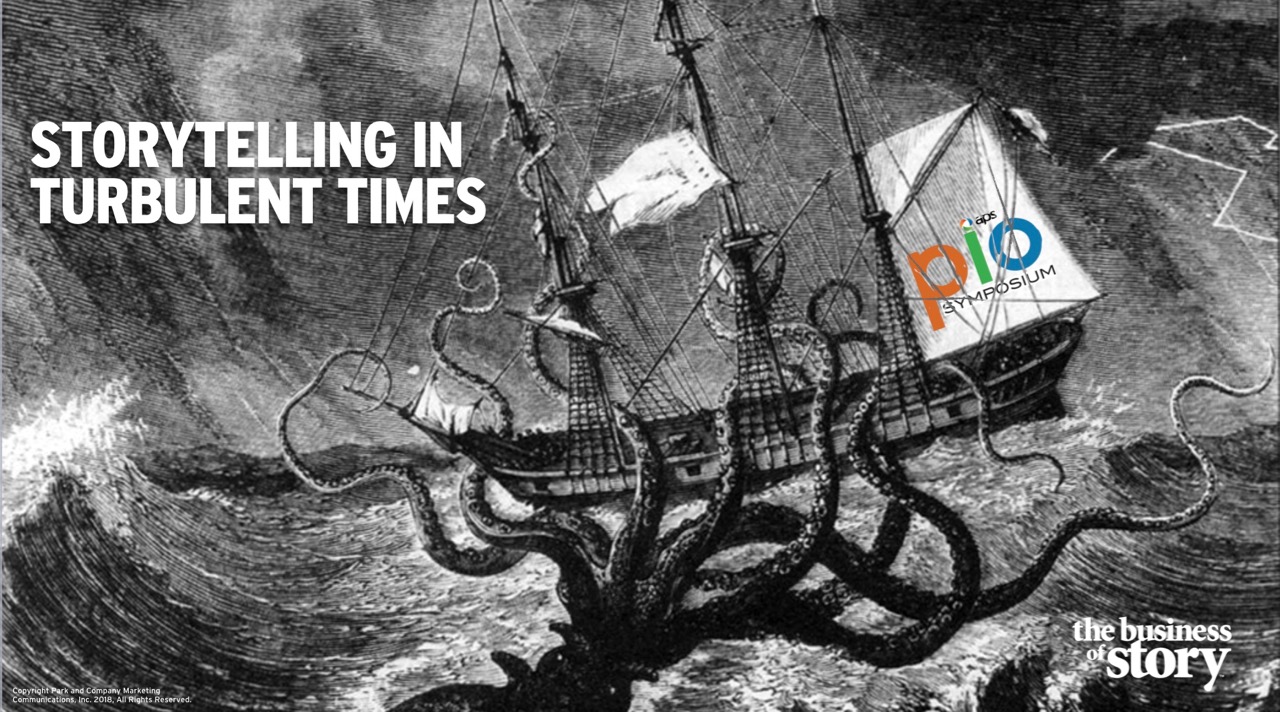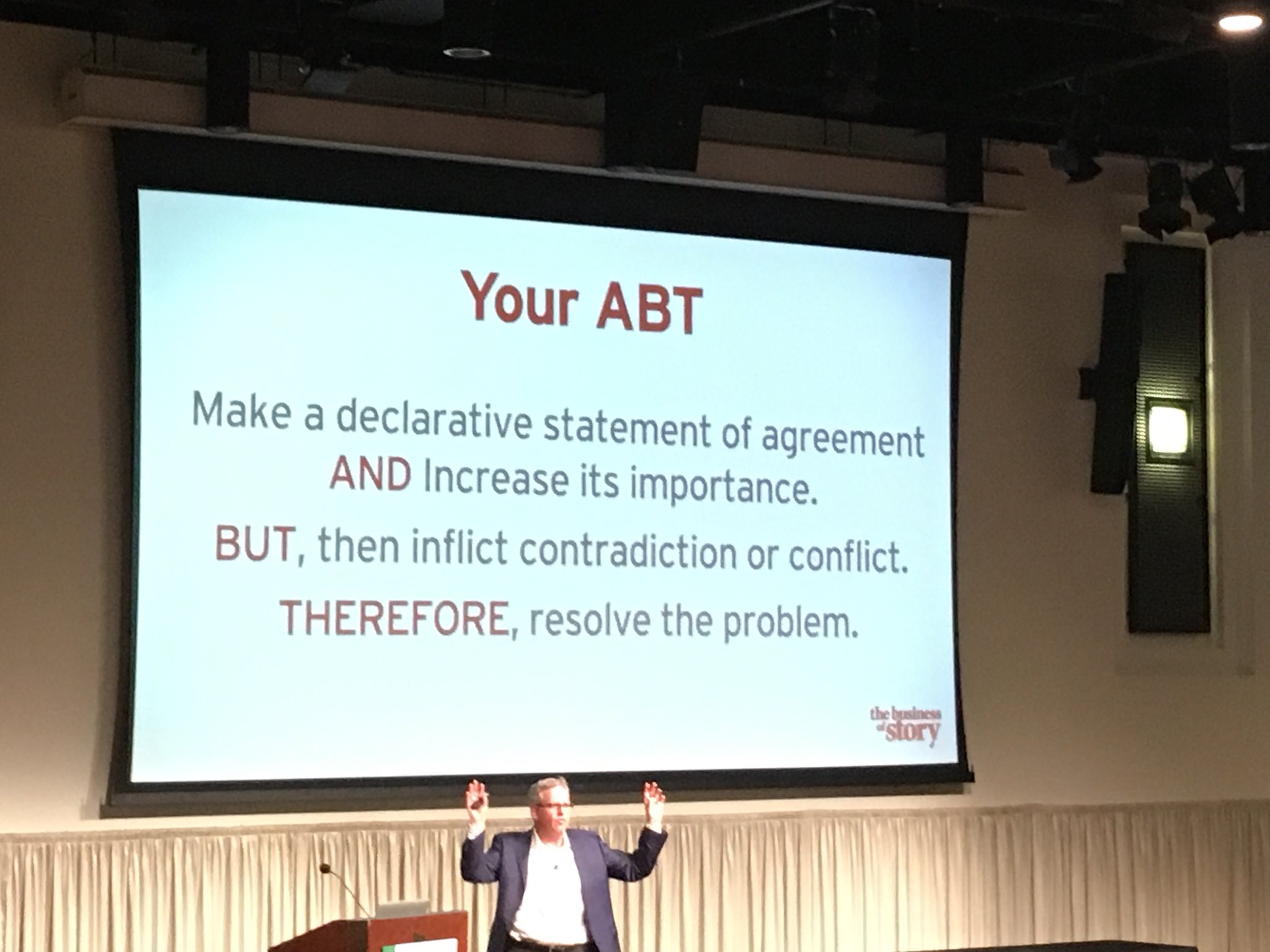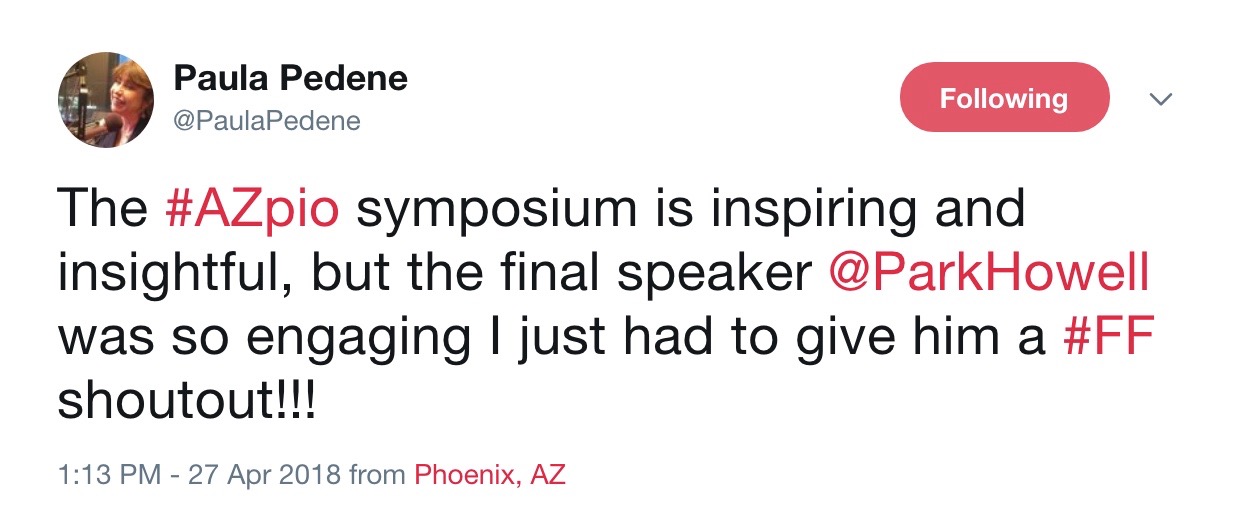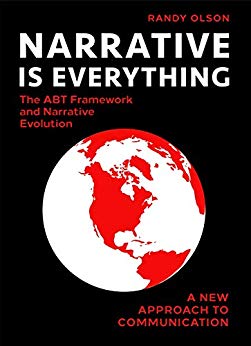Business storytelling to help you weather any storm
Last Friday, I presented a keynote to more than 300 public information officers from multiple cities throughout Arizona. This was the seventh annual PIO Symposium hosted by Arizona Public Service Electric Company and ASU’s Walter Cronkite School of Journalism and Mass Communication.
It was a powerful gathering of communicators, but I was the last speaker after lunch on Friday. Following a long week, the only thing standing between the attendees and their weekend was me. So I reframed my presentation. I told them their weekend started now. I promised my business storytelling presentation would be fun, interactive and most of all − inspiring.
Plus, they gave me a killer topic: Storytelling in Turbulent Times.

We all know how difficult it is to navigate the enormous sea of online communications. To weather the onslaught of content we seemingly have to create. To battle the Kraken of competing messages and its tentacles of blogs, tweets, Snapchats, podcasts, listicles, infographics, Facebook Live videos and Instagrams that strangle our messages and grasp for our audience’s attention.
But there is a way to overcome these chaotic times in communication.
Business storytelling to Red Cross’ rescue

Colin Williams, Regional Communications Director of the American Red Cross
I quickly showed the PIOs why artful storytelling is more important now than ever to be heard in today’s ocean of messages. I introduced the gathering to the And, But and Therefore (ABT) construct to create the sturdy hull for any narrative.
A good story, like a ship, will transport your audience from one world to another. But it needs a sound foundation. The ABT is how you find the focus and theme of your narrative.
The AND is your story set up. The BUT is your story problem. And the THEREFORE is your story solution.
Colin Williams, the Regional Communications Officer of the American Red Cross, volunteered to share his ABT. Here is how he positioned the communications challenge facing the Red Cross.
“The American Red Cross began in 1881 when 60-year-old Clara Barton risked her life supporting soldiers in the Civil War, and we have been helping people recover from disasters ever since. But the individual moments of heroism by our volunteers often go un-sung unless we’re dealing with a major catastrophe. Therefore, the Red Cross must create an army of storytellers out of our volunteers to share the every-day impact we have on peoples’ lives to ensure the sustainability of our organization.”
Colin, using the three-act structure of set up/problem/resolution through the ABT, succinctly created the context for his bigger story.
But as you’ll see, the following story he used to expand on his ABT is more of an anecdote than a sprawling epic. Therefore, use a small story to share an example of the premise you’ve created with your ABT. And please don’t underestimate the power of a short story to make a compelling business case.
How an anecdote is the antidote to overcome a sea of noise

Firefighters battled two first-alarm fires at a Phoenix apartment complex within 24 hours. (Source: 3TV/CBS 5)
Fire flares back up at Phoenix apartment complex; 5 people displaced
“Just after midnight on Tuesday of this week Michael Young, a Red Cross Disaster Action Team Captain, responded to 27th Avenue and Indian School to assist those affected by a large apartment building fire. Michael and his team of volunteers had successfully processed a half dozen people. But when they were leaving the scene they noticed the fire had rekindled and was quickly spreading throughout the attic space of an occupied portion of the apartment building.
After notifying the fire dispatchers of the rapidly intensifying blaze, Michael and his team moved quickly to pound on doors, alerting those sleeping in the burning building and assisting numerous occupants to safety, including some in wheelchairs.
The resulting secondary fire ended up blackening a dozen additional units leaving more people without a place to live. Thank God Michael and his team of unsung heroes were there. Not only did they recognize a second, much larger fire had broken out and called 911, but they were able to save people from the inferno and provide recovery assistance to those left homeless.
These are the moments that could’ve ended in catastrophe had the Red Cross not been on the scene, and just another example of our ongoing vigilance and support in times of need.”
Learning the ropes of business storytelling

Like Colin and the hundreds of other PIOs in attendance, you can learn how to craft compelling stories right now.
First, determine your communications challenge and turn it into an opportunity by defining it with your ABT. Write a statement of agreement AND then raise the stakes by increasing its importance. BUT you need to add contradiction or conflict to create story tension; a problem that must be solved. THEREFORE, you resolve the situation by describing the actions you must take.
You are a business communicator AND you have important messages to share. BUT it’s harder than ever to cut through the cacophony of competing communications we all face. THEREFORE, use the primal power of narrative starting with the ABT to craft and tell compelling stories that sell.
Re-read Colin’s ABT above and see how it vigorously captures his communications challenge and quickly turns it into an opportunity. It works because it’s built on a narrative structure of Agreement/Contradiction/Consequence. Our story-processing mind yields helplessly to the three acts of Setup/Problem/Resolution story structure.
But it’s not enough. Now that you have your audience leaning into your ABT that creates context and relevance for your message, you need to deliver an anecdote or short story. Provide an example of the human impact of your actions to illustrate your point and make your call to action more compelling.
The 5 story elements of every strong anecdote
You can use the five story elements of our Storytelling for Leaders deliberate practice program to shape your story. These include:
- Timestamp: When did this happen?
- Location stamp: Where did this happen?
- Character: Who is at the center of your story that your audience can relate to?
- Action: What happened that led to a surprising outcome?
- Business point: What’s your point or call to action in your story?
Re-read Colin’s story above and find these five story elements. Use them in your business storytelling. When you do, you will connect with your audiences like never before.
We received many great comments from the PIO Symposium about our inspirational storytelling keynote and here is just one. But you may want to see what other participants have said from our masterclasses held around the world. Therefore, you can read those here.

If you like what you learned in this post about the applied science and bewitchery of story, I’m happy to provide a keynote for your gathering, perform story workshops for your group, or help you get your brand story straight. I promise to re-ignite within you and your people the one true superpower we all possess – storytelling – to help you nudge the world in any direction you choose.
 If you would like to learn more about using the ABT narrative framework to make your storytelling more compelling, read Dr. Randy Olson’s book, Narrative is Everything: The ABT Framework and Narrative Evolution.
If you would like to learn more about using the ABT narrative framework to make your storytelling more compelling, read Dr. Randy Olson’s book, Narrative is Everything: The ABT Framework and Narrative Evolution.
Or listen to our conversation on the Business of Story podcast on how to use the ABT to focuse your brand story.
#StoryOn!










